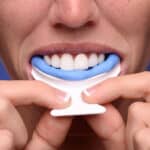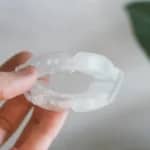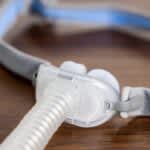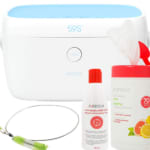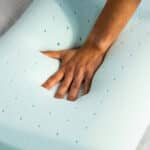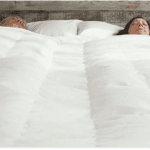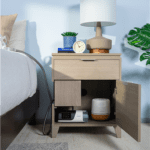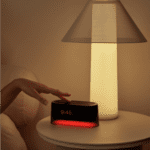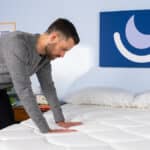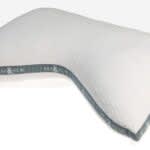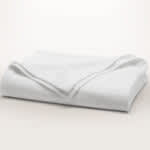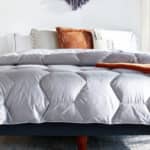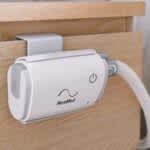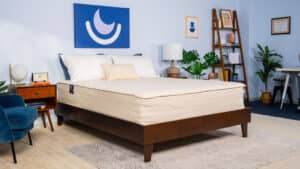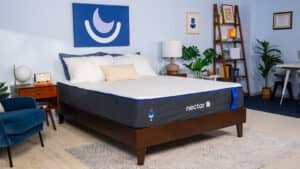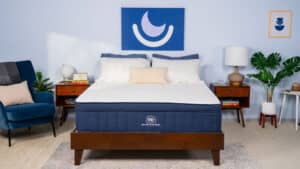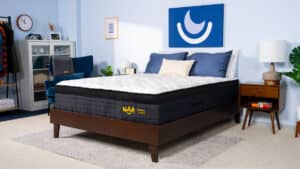At a Glance:
- Adults who sleep on an air mattress or airbed are 12.6% more likely to rate their sleep as “above average,” according to a survey
- These sleepers are also 44.8% less likely to have “poor” sleep.
- Comfort is the No. 1 reason why people choose to sleep on an air-based mattress.
- 91.4% of people who sleep on an air-based mattress rate it at least four stars out of five.
- Half of people who inflate their mattress do so more than once a week.
When Sarah Chan relocated her family from Singapore to Seattle in January 2023, she bought air mattresses for them to sleep on in their new home, knowing that it could take months for their furniture and belongings to arrive. She was pleasantly surprised by how comfortable they were.
“The air mattress was honestly more comfortable than I expected. If you put my air mattress on a bed frame, it would work as well as a regular mattress,” Chan says. “Falling asleep on it felt like I was sleeping on a normal mattress.”
Although only 6.2% of U.S. adults use an air-based mattress as their primary bed, those who do are 12.6% more likely to rate their sleep as above average, compared to all adults. This is according to two surveys from The Sleep Doctor, conducted in November 2022 and February 2023.
Air mattresses are often known as temporary and often saggy stopgaps for house guests and students. Air mattresses and airbeds are inflated with air, but air mattresses are cheaper, meant for short-term use, and have less flexibility. Airbeds are more durable and have multiple air chambers to allow for customized firmness and comfort levels.
Air mattresses are increasingly popular, with sales revenue projected to grow 8.7% by 2028, becoming a quarter-billion business globally. They’re portable, they're affordable, and “there are more options available now,” says David Rubin, a certified sleep science coach and director of product testing for The Sleep Doctor.
They're also not necessarily terrible for sleep quality, with survey respondents on air mattresses and airbeds being 44.8% less likely to experience "poor" sleep. These respondents' sleep length and the time it takes them to fall asleep were right at the survey average, too.
So do these sleepers know something the rest of us don't?
Why Sleep on an Air Mattress?
When asked why they sleep on an air-based mattress, nearly half of the respondents (47.4%) cited comfort. More than a third said convenience (37.2%), followed by flexibility (34.6%), space (31%), and cost (30.8%).
They are also generally satisfied with the mattress itself, giving it 4.5 stars out of five, compared to the survey average of 4.1 stars for all mattress types. Some 60% rated it five stars, with 91.4% rating it four stars or higher.
Count Jordan Mason among the supporters. A 28-year-old recruiter from Bloomingdale, Illinois, Mason purchased a self-inflatable queen-size air mattress during a move to use until she bought another bed. She says she enjoyed sleeping on the air mattress so much that she missed it when her new gel-type mattress arrived.
“The first night was probably a little weird, but I don't even [think it was] the bed,” Mason says. “I think it was just because [my boyfriend and I] were in this random house we had just moved into. We were deep sleeping and sleeping pretty long in that bed.”
There's something to the transient nature of air-based-mattress users, as well. According to the survey, they are 79.7% more likely than average to be students and 55.1% more likely to be unemployed. They're also 53.8% more likely to sleep on a twin mattress, though queen-size air mattresses and airbeds were the most popular size among respondents at 48.6%.
How Much Are Air Mattresses Evolving?
Survey respondents with favorable views of air mattresses may be reacting to the fact that the category has significantly changed in recent years. Traditionally made of vinyl, air mattresses were essentially “one giant chamber” of air, Rubin says.
“The old mattresses would deflate overnight. They're self-inflating these days,” Rubin says. “They have multiple chambers, so now they better mimic a traditional bed where you have more support. This can help prevent a 'sinking in the middle' feeling. [And] some air mattresses have cushioning on top."
Some newer air mattresses have inflatable headboards and felted fabric covers, too, so sheets don’t slide around. This makes sleeping on them even more comfortable, Rubin says.
“If you have a nice 12- or 15-inch air mattress, you're really getting a similar kind of experience to a more basic memory-foam bed,” he says.
That's not to say that users of these mattresses follow this advice. Just 24.4% of respondents use a frame, stand, or platform for this type of mattress, and 21.8% have a headboard of any kind.
Can You Sleep on an Air Mattress Permanently?
Even with high satisfaction, air mattresses may not be a realistic permanent sleep solution, as reflected in the November 2022 survey. Much like Mason and the Chan family, 54.3% of respondents who sleep on an air-based mattress full-time anticipate buying a new mattress in the next 90 days, compared to 44.2% of all respondents. Dr. Valerie Cacho, an integrative sleep physician with patients in Hawaii and California, says an air mattress may be helpful for someone who prefers a firmer surface. These typically are back- or stomach-sleepers, and air-based-mattress users are 17.4% more likely to sleep on their stomach, according to the February 2023 survey.
But there are downsides. Even with multiple chambers, if one person moves on the bed, anyone else sleeping with them will feel that movement. Some 71.4% of survey respondents on these mattresses share a bed.

“If your partner is moving, then that movement can actually disrupt the quality of sleep you're having,” Dr. Cacho says.
Figuring out how much to inflate the mattress is also a challenge, says Dr. Michael J. Breus, Ph.D., of The Sleep Doctor. Too much or too little air can affect spinal alignment and cause pain when you wake up, he says.
Like a balloon, air mattresses can get punctured easily, leading to a slow leak or complete deflation. It’s simple to fix the holes. But it’s unpleasant if it happens in the middle of the night.
Air mattresses also need to be inflated. Half of respondents say they add air to their mattress more than once a week, with 21.8% doing so daily.
Some mattresses have another drawback: “They're noisy,” Dr. Breus says. “Air mattresses pop and squeak, and it's not so easy to sleep on them.”
Still, air mattresses can be a lifesaver for folks such as Chan and Mason or campers, travelers, or caregivers. Having a quality air mattress around in a pinch may be worth it for a good night’s sleep.
Mason says she’s holding on to her air mattress for future use, and she’s glad she invested a little more and bought a model that sits high off the floor and comes with a pillow-top cover; just 23.1% of adults who sleep on an air-based mattress use a topper.
“Spending the money on a good air mattress is kind of important,” she says. “You can buy a $10 air mattress, but I doubt you're going to sleep as well.”
Methodology
The surveys commissioned by The Sleep Doctor were conducted on the online survey platform Pollfish on Nov. 29, 2022, and Feb. 27, 2023. Results are from 1,250 survey participants in the United States who were ages 18 or older at the time of the survey. The November 2022 survey included only respondents who sleep on a mattress at their primary residence. The February 2023 survey included only respondents whose travels included at least one overnight stay outside the home in the prior 365 days. All respondents attested to answering the survey questions truthfully and accurately.



